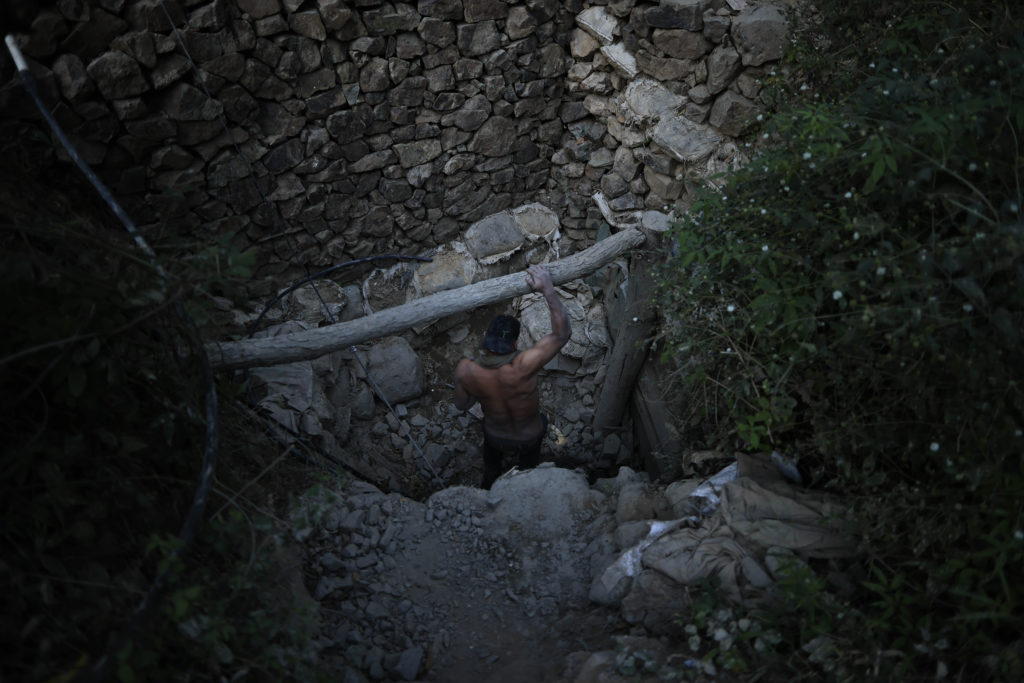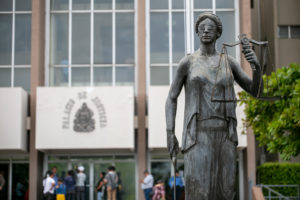It has been a long time since gold made dreams come true in El Corpus, a municipality in the Honduran department of Choluteca. The mining industry causes deforestation, destroys communities, generates violence and pollutes rivers while the Honduran government does nothing to minimize toxicity levels. Transnational corporations continue digging with no regard for communities because of the large gold deposits found throughout Central America. Artisanal miners who try their luck deep underneath the surface no longer talk about gold nuggets that would change the course of their lives since gold has turned to dust after centuries of uncontrolled exploitation.
Text: Célia Pousset
Photography: Jorge Cabrera
Translation: José Rivera
Seven men came out of the bushes with their faces covered in mud. They walked to a well, whose water seemed unclean, and washed themselves. Some of them were so cold that their teeth were chattering. It was 4 p.m., and they were done for the day. One of them glanced mistrustfully at us and asked, “Are you environmentalists or something like that?” as he used his rubber boot to pick up water and clean his pants. “We don’t want any trouble,” he added. Suddenly, time seemed to have stopped, and they all gave him a sidelong glance as if trying to figure out what to do next.
People have looked for gold in El Corpus since colonial times, with or without permission and in their own property or someone else’s. This group of miners belongs to the second category; they illegally extract minerals. They call themselves “güiriseros.” The Mayor’s Office calls them “artisanal miners” while the Environmental Crimes Unit calls them “illegal miners.” Despite efforts at regulating mining after several landslides killed around 15 people, nothing has changed: miners move through tunnels that lead nowhere and cumbersomely dig for the slightest trace of gold as it becomes increasingly scarce. The search for gold entails obscurity and hope.
Their boss finally agreed to show us their clandestine activities as long as we don’t reveal the location of the mine. After shortly walking through the bushes, we found it. At first glance, it doesn’t seem very impressive: the hole is three meters deep, the entrance is held by wooden boards, and pipes draw fresh air and pump it inside. They made a collective investment of 250,000 lempiras (around $10,000). The miner gestured the shape of a snake that goes down and said, “That’s how we go down to this hellish place. It wouldn’t be possible without air.” The 130-meter-long tunnel was not dug arbitrarily; the way gold is encrusted in the rocks shows the direction of the vein and points to the direction miners should continue digging.
The miner was six-years old when he first joined his father at work. Thirty years later, he uses the same tools: a flashlight, a drill, a spade, nylon bags to take out dirt and gravel, and mercury, which is combined with gold-bearing rocks before they are grinded in a mill made from river rocks.
They started digging in the area nine months ago, but the results are disappointing, and most miners have side jobs harvesting melons or sugar to make ends meet. According to their calculations, they need to extract 250 grams of gold from this mine in order to obtain a return on the original investment because the current 18 karat gold price per gram is about 1,000 lempiras ($40). There’s still a lot of work to be done, and they cannot allow a couple of “environmentalists” to get in the way.
A silent war has been unfolding in El Corpus for many years between those who defend mining as a fundamental right to work and those who oppose it to protect the right to life and health.
Generations of miners
Lucia, whose real name will not be disclosed to protect her identity, lives less than a kilometer away from the artisanal mine. She is an environmentalist; one of the few who dares speak up against the mining industry. She welcomed us at her house. She’s sitting on a plastic chair and her dog is sleeping at her feet. There’s a small garden right next to her. She’s wearing a shirt with female empowerment quotes and a black skirt.
Her father, husband, and son were miners in the village of San Juan Arriba and explored the Cuculmeca hill. Her son lost his nails trying to rescue two coworkers who were buried in a landslide in 2016. He couldn’t save them; he saw the mine swallow them as they screamed for help. Her son was one of the men who recovered and washed the bodies before handing them over to their families. He was 16 years old at the time and still had nightmares months after the accident. At the time, Lucía joined an environmental association in Choluteca that raised awareness of the consequences of mining. She couldn’t believe that she and her father had been working with such a toxic substance, mercury, since she was eight years old. She now calls it “the poison.”
Lucía convinced her son and husband to leave the mines behind. “I taught them what I learned in the workshops. I told them about the health consequences: pulmonary diseases and kidney failure. I was able to get them out,” she said proudly. Her son now works at a sugar plantation, and her husband migrated to Olancho, the largest department in Honduras, and works on coffee farms. She’s alone now.
Lucía has become more involved in the struggle. She organized environmental committees in the communities of El Corpus and took part in the oversight of large mining companies. Many things are subject to scrutiny: faults in processes, dead animals close to the rivers, and changes in the color of water. It wasn’t long before she started receiving threats. These ranged from comments by employees at Cerros del Sur, a transnational mining company, to receiving pictures of corpses with disfigured faces on her phone. Recently, she was walking in El Corpus’ central park when a man approached her and lifted his shirt to show her a gun. She was shocked.
Her relatives have advised her several times to desist because they fear “she’s going to get killed.” But Lucía is convinced that companies don’t want the best for the people; they only cause destruction. Mining, whether industrial or artisanal, causes death, deforestation and pollution. “Some day my grandchildren will ask me: What did you do to stop all this? And I have to answer them,” she said.
Organizations have left the municipality because threats are more frequent now. The coordinator of the Social and Environmental Movement for Life in the South (Movimiento Ambientalista Social del Sur – MassVida) said “it’s difficult to provide support due to the risks.” Organized crime has been causing violence in the mining industry. It’s getting more difficult to extract gold because there isn’t much left. Companies with licenses to operate on opencast mines don’t extract as much gold as they used to, so they buy it from artisanal miners and processing it. This leads to conflicts over the control of tunnels, and criminal networks have organized to steal gold from other groups.”
Although the Mayor’s Office in El Corpus denies the insecurity in the municipality, the palpable tension in the central park suggests otherwise. In this colorful place, a large yellow arc that says “Land of gold and silver” stands right next to the almond trees. Locals glance persistently, and young men take pictures of outsiders. The letters “MS” are painted on a cabin where children play.
Manuel de Jesús Villamil, director of the Regional Prosecutor’s Office in Choluteca, highlighted “an increase in the consumption and trafficking of drugs in the municipality, and the arrival of criminal groups, according to information from the Directorate of Police Investigation (Dirección Policial de Investigación – DPI).” However, a DPI inspector said they haven’t received any complaints lately, and Los Zorros, the criminal group that operated in Cuculmeca, was recently dismantled by the Police Directorate against Gangs and Organized Crime (Dirección Policial Anti Maras y Pandillas Contra el Crimen Organizado – Dipampco). The leaders of the group, El Zorro and El Chino, were arrested on November 15, 2023, and January 17, 2024, respectively.
A Dipampco agent explained how this criminal group was formed, “It emerged in 2017. At first, it was a large group from the community of San Juan Arriba who opposed the arrival of foreign investors, but once that objective was achieved, they began extorting, robbing, selling drugs, committing murders, and causing panic. They were 12 active members and had many sympathizers which is why it was difficult to obtain information from locals. Nine are now in prison, one was killed in a shooting and the rest fled the region.”
Los Zorros had the intention of forming an alliance with Los Pelones, a criminal group that operated in Choluteca and Yusguare. Regarding possible connections between criminal groups and the MS-13 gang, the agent said that the gang doesn’t have any presence in the municipality, but he “doesn’t rule out that criminal groups can be used by gangs because El Corpus is a strategic area that connects to Nicaragua, where many criminals hide from authorities.” In any case, crime and gold are connected. Motorcycles are stolen, and the engine is used in the mill to grind gold.
At the Cuculmeca mine in the village of San Juan Arriba, every single artisanal miner we interviewed said this still is the most dangerous place in the municipality. One of them worked there for years. He says, “There are too many people, too many drugs, and it’s too risky. They rob, sometimes kill, those who extract the most gold.” The nine members of Los Zorros, who are serving time in prison, were wanted for homicide.
Is it possible to regulate the Cuculmeca mine?
In July 2014, Juan Orlando Hernández, then president of Honduras, was in Cuculmeca and witnessed a “miracle of God” when he allegedly saw eight miners get out of the rubble after a landslide. It’s not clear what he saw because in fact 11 miners buried in the landslide were killed. He corrected his tweet 10 minutes later, regretting the “false news.” Hernández is now in prison in the U.S. on drug trafficking charges and is awaiting trial.
How many bodies have been taken by the mine? The number is incalculable. The mine’s history goes back to colonial times, when underground mining began. But landslides have been more frequent in recent years and it’s due to overexploitation and deregulation.
After the tragedy in 2014, authorities tried to regulate mining but failed. The head of the Technical Unit in the Mayor’s Office in El Corpus told Contrarriente, “After the landslide in 2014, the government and the Mayor’s Office decided it was time to conduct mining activities in accordance with environmental and safety regulations. Two groups were created. The idea was to organize communities to avoid overcrowding the Cuculmeca mine. We followed a plan: each community took turns to work in the mine for one day. But it was unsustainable. More than 3,000 miners would go to work, and it got out of control. In the end, the interests of groups became stronger than our organization. And criminal groups emerged to control the tunnels.”
Three miners died in a landslide in 2016. Geoconsult, a construction company, was hired by the government to stabilize the area. The project engineer said they stabilized slopes and sealed unstable tunnels in Cuculmeca between August and December 2016. But “the situation was complicated because miners never stopped digging for gold while we worked,” he said.
Coverage from news outlets is just the tip of the iceberg because most of the time, relatives or the media “don’t bring much attention to accidents in the mine.”
It’s difficult to obtain information about operations at the mine in San Juan Arriba. The area is highly controlled and closed off by a large gate. Cars and motorcycles can be seen driving by the entrance. Doña Tula, who lives right next to the property, welcomed us into her house. “You shouldn’t talk to miners because they don’t own the property but I do. They’re illegally extracting gold. People are trespassing and that’s why I charge a fee of 300 lempiras ($12) per vehicle. I don’t know how much material they extract…,” she said when three men came into her living room. Doña Tula remained quiet and asked us to leave.
Máximo Hernández, prosecutor at the Environmental Crimes Unit in Choluteca, told Contracorriente that this problem is almost impossible to solve, “Miners illegally extract gold and trespass on private property, but we cannot prosecute all of them. Artisanal mining is, above all, a social issue. We try to evacuate the area and close the mines, but they always come back. It’s the source of income for many families. What other choices do they have?”
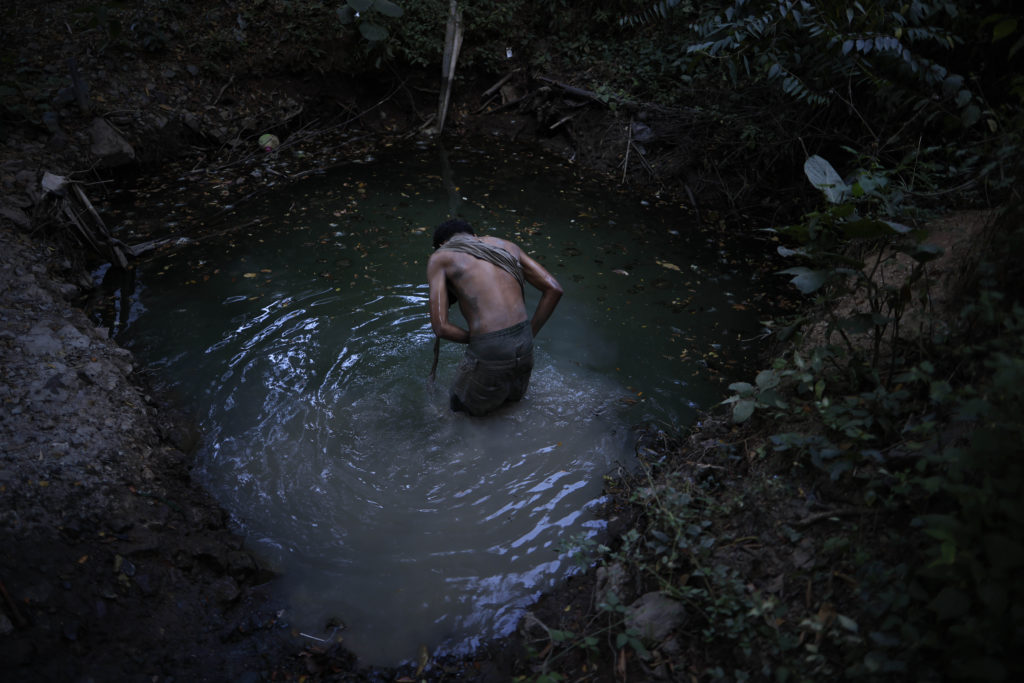
Opencast mining
President Xiomara Castro did not keep her promise to ban opencast mining in El Corpus and other parts of the country.
Municipal authorities talk about the decline of mining. But in the city, a few meters away from the main street, mining machinery from Cerros del Sur is operated every day. The company placed zinc sheets to hide the project, but it doesn’t fool the neighbors anymore.
“They’ve dug deep holes everywhere. They take out truckloads of dirt during the day and grind it with that toxic substance (cyanide) at night. And we breathe it. They can’t find anything; every plot of land they have bought is filled with sand and holes. Heavy rain would flood El Corpus,” said David, a resident who has lived here for more than 45 years and whose plot of land has caught the company’s attention. “A group of engineers asked me if I would sell my property but I won’t, no matter what. They knock on people’s houses looking for places to dig. My neighbor sold his property for 60,000 lempiras (around $2,431). We could be sitting on a gold mine, but I’m not interested in having those destructive machines on my property,” he added.
The Honduran mining industry reached a milestone in the 1990s, when only underground mining was allowed. Donald Hernández, lawyer at the Honduran Center for the Promotion of Community Development (Centro Hondureño de Promoción para el Desarrollo Comunitario – Cehprodec) said that in October 1998, when Hurricane Mitch was still affecting Honduras and “families were looking for their loved ones,” National Congress passed the first mining law. This was the beginning of another misfortune for Honduras: the authorization of opencast mining.
This is how international mining companies began arriving in Honduras with the intention of implementing a new method of extraction that was already used in South America. “We didn’t know anything about this method and its impact. We learned quickly, and Honduras became a laboratory where people who have no mining industry come to study the diseases it causes,” Hernández recalled.
The Canadian transnational company Clave Rico was the first one to arrive in El Corpus, but it now operates under a different name: Cerros del Sur. The Mayor’s Office told Contracorriente that this is the only mining company that pays taxes. “Raptor is solely dedicated to buying gold from artisanal miners and to process it, Nona and Titán are waiting for their permits, and Aguila Dorada had to shut down in El Naranjal,” said a public official on the condition of anonymity. He explained that Aguila Dorada closed because “regulations concerning the use of dynamite are more strict and there wasn’t much interest.” However, locals said the company began operating in another village after leaving El Naranjal.
Hernández says that more than 500 mining concessions have been granted in Honduras, but not all of them are in the operation phase. In 2006, then President Manuel Zelaya considered banning opencast mining, but “foreign pressure was too strong, and a new mining law was passed in 2012 under President Porfirio Lobo.” At present, mining is one of the leading causes of violence in Honduras, and land conflicts place Honduras among the most dangerous countries in the world for environmentalists and activists.
The landscape of deforested hills and a turquoise pool in the middle of the valley in El Corpus could be a postcard for the rest of the world. “All of the gold extracted in El Corpus is going to the U.S. Large companies or businesses that buy this precious metal from artisanal miners send it abroad,” the public official said.
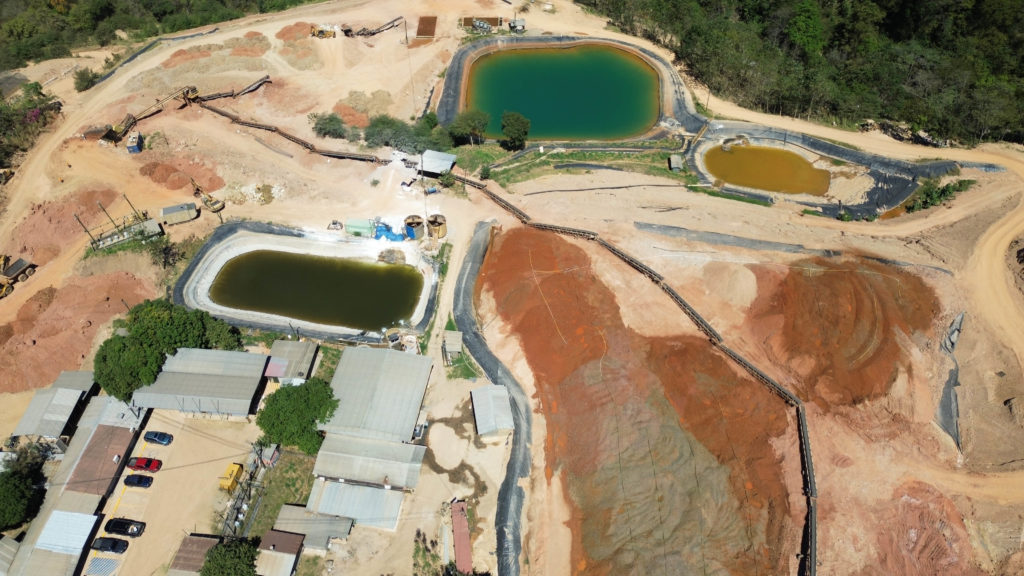
At Metalsur, a business that buys and sells gold and other metals in a shopping center in Choluteca, Contracorriente inquired about the clients and providers, but they didn’t share any information. However, we corroborated that the price of gold per gram is 1,000 lempiras ($40).
“It’s a challenge for the Mayor’s Office to regulate companies. The Environmental Unit and the Honduran Institute of Geology and Mining (Inhgeomin) verify processes such as digging methods, but we don’t have the authority to suspend mining operations,” the public official explained. He also revealed that a complaint of damage to urban areas was recently filed against Cerros del Sur with the Environmental Crimes Unit. It’s surprising because “we had the highest tax collection in 2023 and demanded a sworn statement about the company’s sales.” The Environmental Crimes Unit in Choluteca confirmed the complaint was indeed filed against Cerros del Sur.
“We are not monitoring any river in the south”
In a small office at the Center for Pollution Control (Cessco) in Choluteca, a specialist, who was wearing a beige vest and hat, met with us after labeling jars that had to be sent to a laboratory. She said she didn’t have much time and if the samples were not ready on time, they would not be analyzed correctly. Cessco is under the authority of the Secretariat of Natural Resources and its mission is to control chemical substances in water, air, soil, food, among others. After finishing her work, she sat down and explained that “in 2006, a study revealed a pH alteration and an abnormal presence of metals in water in El Corpus.”
Not much data has been obtained since 2006. Another study was carried out in 2020, but it wasn’t thorough. “I wasn’t able to evaluate as many microbiological parameters as I wanted to because I didn’t have all the reagents that I needed. I didn’t have all the tools,” she explained. Those studies are crucial because if a company’s wastewater is not in compliance with environmental standards, the Directorate of Environmental Evaluation and Control (DECA) can sanction them and suspend their environmental license. A mining company cannot operate without a permit issued by the Honduran Institute of Geology and Mining (Inhgeomin) or an environmental license.

The specialist admitted that Cessco did not provide any services throughout 2021 due to a lack of equipment and funding. “We didn’t have representative samples,” she said. They are now operating at “64 percent capacity” but not monitoring “any river in the south.”
Gillian Vallejo, a biologist who works at the Environmental Crimes Unit in Choluteca, condemns the impacts of mining: “Heavy metals cause major pollution, and not even animals can drink water in this region.” Every large mining company has the paperwork in order, but landslides keep occurring.” She maintains that both artisanal and industrial mining cause pollution, but the unregulated use of mercury constitutes the most serious problem.
The Mayor’s Office in El Corpus has introduced measures “to improve the management and treatment of mercury,” but such measures are subject to large companies’ goodwill and create a new form of dependency on their infrastructure. “We have met with companies and discussed the possibility of collecting concentrates from artisanal miners and extract what’s left of minerals with cyanide instead of dumping waste into the rivers. This way, we all benefit,” the public official explained.
Mercury or cyanide are combined with concentrates and then ignited, leaving gold pebbles behind. But cyanide is stronger and merges more easily. Such low-cost methods allow miners to process concentrates that contain small traces of gold. Therefore, in response to the gradual depletion of gold deposits in El Corpus, an increased application of chemicals seems to be a solution, to the detriment of the environment and public health.
Neither that nor the zinc sheets that cover the damage caused by mining are the solutions that Lucía expected. She dreams of building field schools and community centers on the vestiges of the old mines. It’s her dream. A month ago, her 32-year-old cousin, a miner, died of pulmonary disease. Most of them work on the mines as their fathers and grandfathers did, digging for gold until they find the very last gram.

